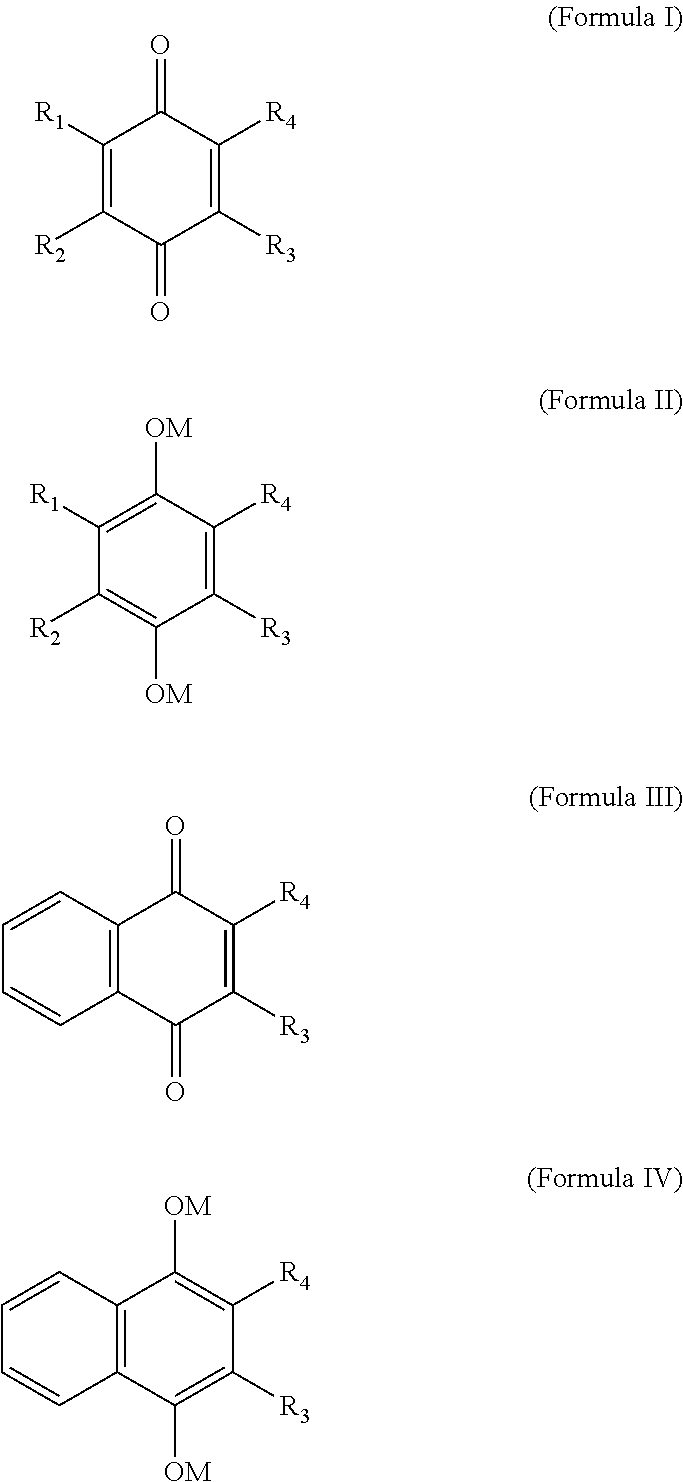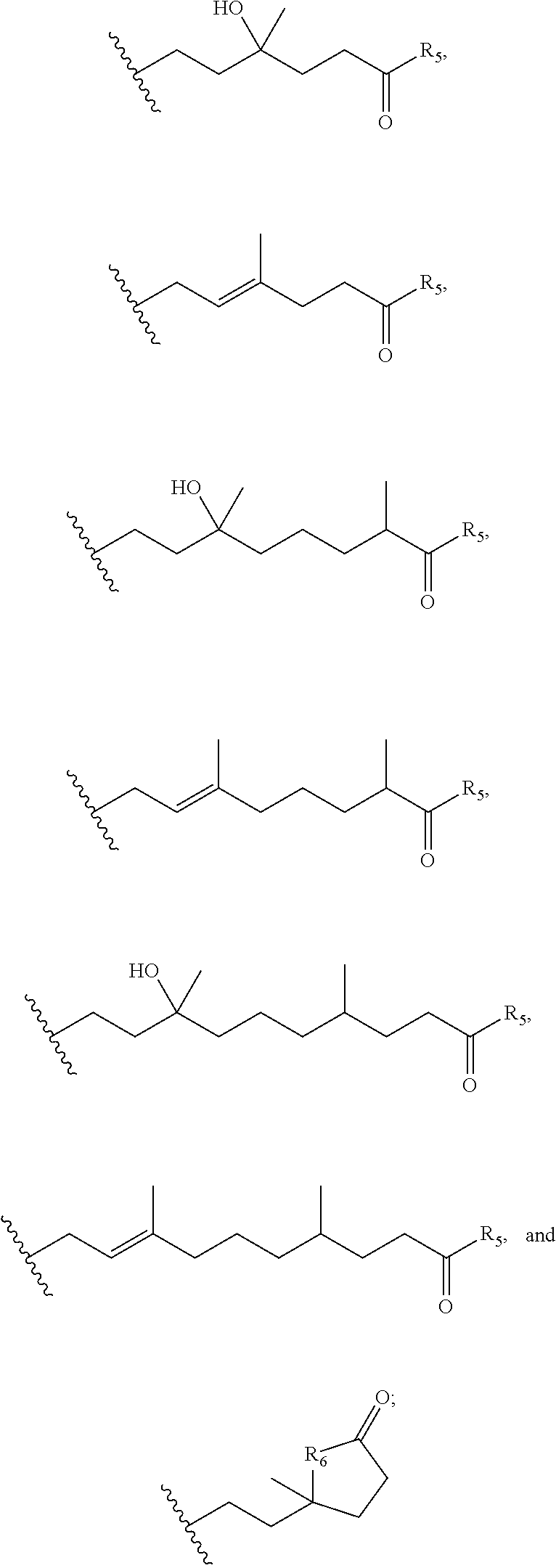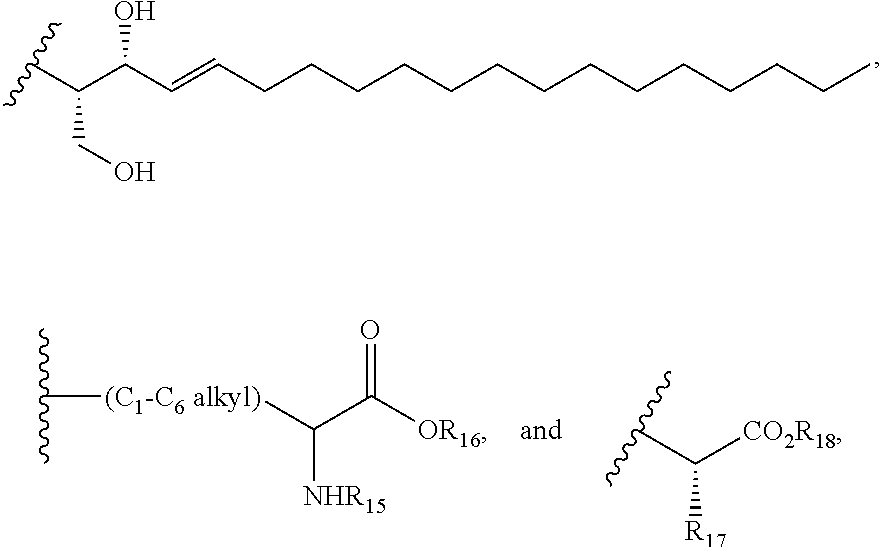Carboxylic acid derivatives for treatment of oxidative stress disorders
a technology of oxidative stress and carboxylic acid, which is applied in the direction of drug compositions, extracellular fluid disorders, metabolic disorders, etc., can solve the problems of cell damage and cell death, oxidative damage to the cellular structure and machinery, and the rate of damage to the cell membrane exceeds the capacity of systems which control or repair, so as to enhance one or more energy biomarkers
- Summary
- Abstract
- Description
- Claims
- Application Information
AI Technical Summary
Benefits of technology
Problems solved by technology
Method used
Image
Examples
examples
[0140]
example a
Synthesis of Ethyl 4-hydroxy-4-methyl-6-(2,4,5-trimethyl-3,6-dioxocyclohexa-1,4-dien-1-yl)hexanoate
[0141]
[0142]Alpha-CEHC. Synthesis of alpha-CEHC is known via multiple routes in the literature. For example, Mazzini, Francesco; Galli, Francesco; Salvadori, Piero in European Journal of Organic Chemistry (2006), (24), 5588-5593 and Pope, Simon A. S.; Burtin, Guillaume E.; Clayton, Peter T.; Madge, David J.; Muller, David P. R. From Free Radical Biology & Medicine (2002), 33(6), 807-817.
[0143]Synthesis of alpha-CEHC ethyl ester. Alpha-CEHC (50 mg) was taken up in ethanol (2 mL), and treated with 20 microliters concentrated sulfuric acid. The resulting mixture was heated to reflux for 4 hrs. After this time, the reaction mixture was concentrated in vacuo and purified by silica gel chromatography to yield the ethyl ester product (40 mg).
[0144]Synthesis of Ethyl 4-hydroxy-4-methyl-6-(2,4,5-trimethyl-3,6-dioxocyclohexa-1,4-dien-1-yl)hexanoate. Alpha-CEHC ethyl ester (31 mg, 101 μmol) was t...
example b
Synthesis of 2,3,5-trimethyl-6-(2-(2-methyl-5-oxotetrahydrofuran-2-yl)ethyl)cyclohexa-2,5-diene-1,4-dione
[0145]A solution of alpha-CEHC (25 mg, 90 μmol) was stirred in a biphasic mixture of isopropylacetate (1 mL) and water (0.5 mL) and cooled in an ice-water bath. To the reaction mixture was added a solution of ceric ammonium nitrate (98 mg, 180 μmol) in 0.5 mL water dropwise over 1 minute. The reaction mixture was stirred for 30 min, after which time the aqueous layer was discarded. The remaining organics were washed with water and brine (1 mL each) and dried over sodium sulfate and concentrated in vacuo. The crude material was then dissolved in 2 mL TFA, stirred for 20 minutes at room temperature and concentrated in vacuo. The resulting residue was purified by silica gel chromatography to provide the product (11 mg), which was characterized by 1H NMR and HPLC-MS.
PUM
| Property | Measurement | Unit |
|---|---|---|
| temperatures | aaaaa | aaaaa |
| temperatures | aaaaa | aaaaa |
| temperatures | aaaaa | aaaaa |
Abstract
Description
Claims
Application Information
 Login to View More
Login to View More - R&D
- Intellectual Property
- Life Sciences
- Materials
- Tech Scout
- Unparalleled Data Quality
- Higher Quality Content
- 60% Fewer Hallucinations
Browse by: Latest US Patents, China's latest patents, Technical Efficacy Thesaurus, Application Domain, Technology Topic, Popular Technical Reports.
© 2025 PatSnap. All rights reserved.Legal|Privacy policy|Modern Slavery Act Transparency Statement|Sitemap|About US| Contact US: help@patsnap.com



